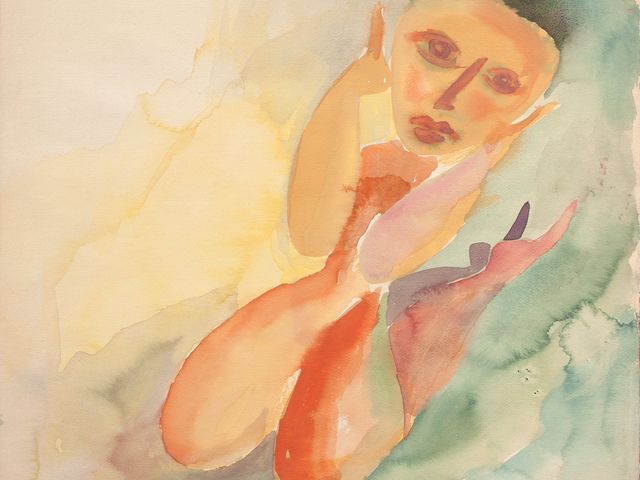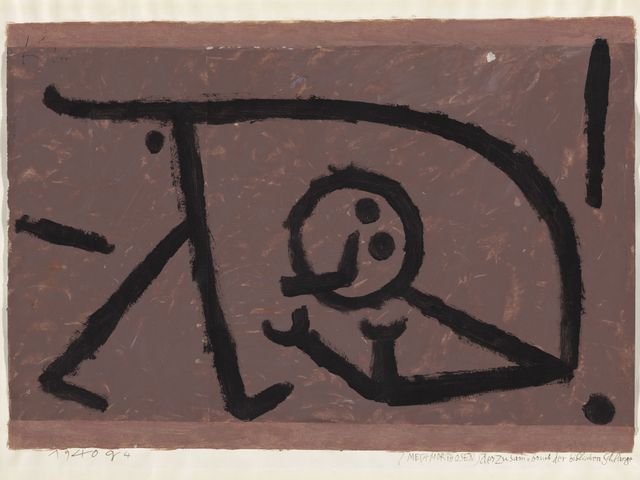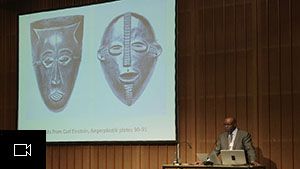Apr 13–Jul 9, 2018
Neolithic Childhood. Art in a False Present, c. 1930
Exhibition and conference
Apr 13–Jul 9, 2018
Neolithic Childhood examines how the artistic avant-gardes reacted to the multiple crises of European modernity around 1930 – the “crisis of consciousness,” the revisions of early and pre-history, the imperialist struggle, the barbarism of technological mass war, the shock of capitalist industrialization, the failure of the Second (Socialist) International, the endgame of bourgeois humanism and the hypocrisies of colonial discourse.
The stock market crash and mass unemployment, political polarization, the industrialization of perception, the violence of colonialism: “c. 1930” was a time of crisis in modernity. For the artistic avantgardes in Europe, the contemporary condition also became problematic; the impositions of the present led artists to break out into an imaginary realm of the archaic and the exotic— seeking out alternative origins and points of departure for humanity. New sciences and the fields already undergoing profound changes— such as ethnology, archae ology, psychology, and mathematics—served as resources. “World art” became a key concept for revising history and modernity.
Taking its cue from texts by the extraacademic art historian Carl Einstein, an exhibition and conference will thematize the upheavals, openings, and contradictions that became manifest in art and the humanities from the 1920s into the 1940s. The “Neolithic Childhood”—a concept used by Carl Einstein to characterize his understanding of Hans Arp—seemed to be a helpful fiction through which to critique the present.
From Max Ernst’s series of works on non-human natural history and Brassaï’s photographs of prehistoric-looking graffiti to the sexual iconographies of Toyen and Catherine Yarrow’s mask-like watercolors: the aesthetic politics of Surrealism play a central role in the exhibition. A panorama of 180 artworks and 600 archival sources propose an insight into the interaction between the visual arts, politics, philosophy, ethnology, psychology, and the natural sciences in the period between the world wars. The exhibition offers the first public view of the original manuscripts of Carl Einstein, who—with the intention of being anti-canonical—contributed substantially to the canonization of modern art. Magazines such as Documents, which was significantly influenced by Georges Bataille and Carl Einstein, works by well-known artists—such as Hans Arp, Georges Braque, and Paul Klee—and works by less familiar figures demonstrate the role played by art and visual culture in grappling with the crises around 1930.
With works by Hans Arp, Willi Baumeister, Georges Braque, Claude Cahun, Germaine Dulac, Sergei Eisenstein, Max Ernst, T. Lux Feininger, Florence Henri, Hannah Höch, Heinrich Hoerle, Valentine Hugo, Paul Klee, Germaine Krull, Len Lye, André Masson, Richard Oelze, Wolfgang Paalen, Jean Painlevé, Alexandra Povòrina, Gaston-Louis Roux, Kurt Seligmann, Kalifala Sidibé, Jindřich Štyrský, Toyen, Frits Van den Berghe, Paule Vézelay, Catherine Yarrow and others.
In cooperation with the Akademie der Künste the Carl-Einstein-Archiv, which is held there, has been digitized: adk.de/einstein
A publication to accompany the exhibition was issued by diaphanes (in a German and an English edition).
Curated by Anselm Franke and Tom Holert. Advisory board: Irene Albers, Susanne Leeb, Jenny Nachtigall, Kerstin Stakemeier
Part of Kanon-Fragen



